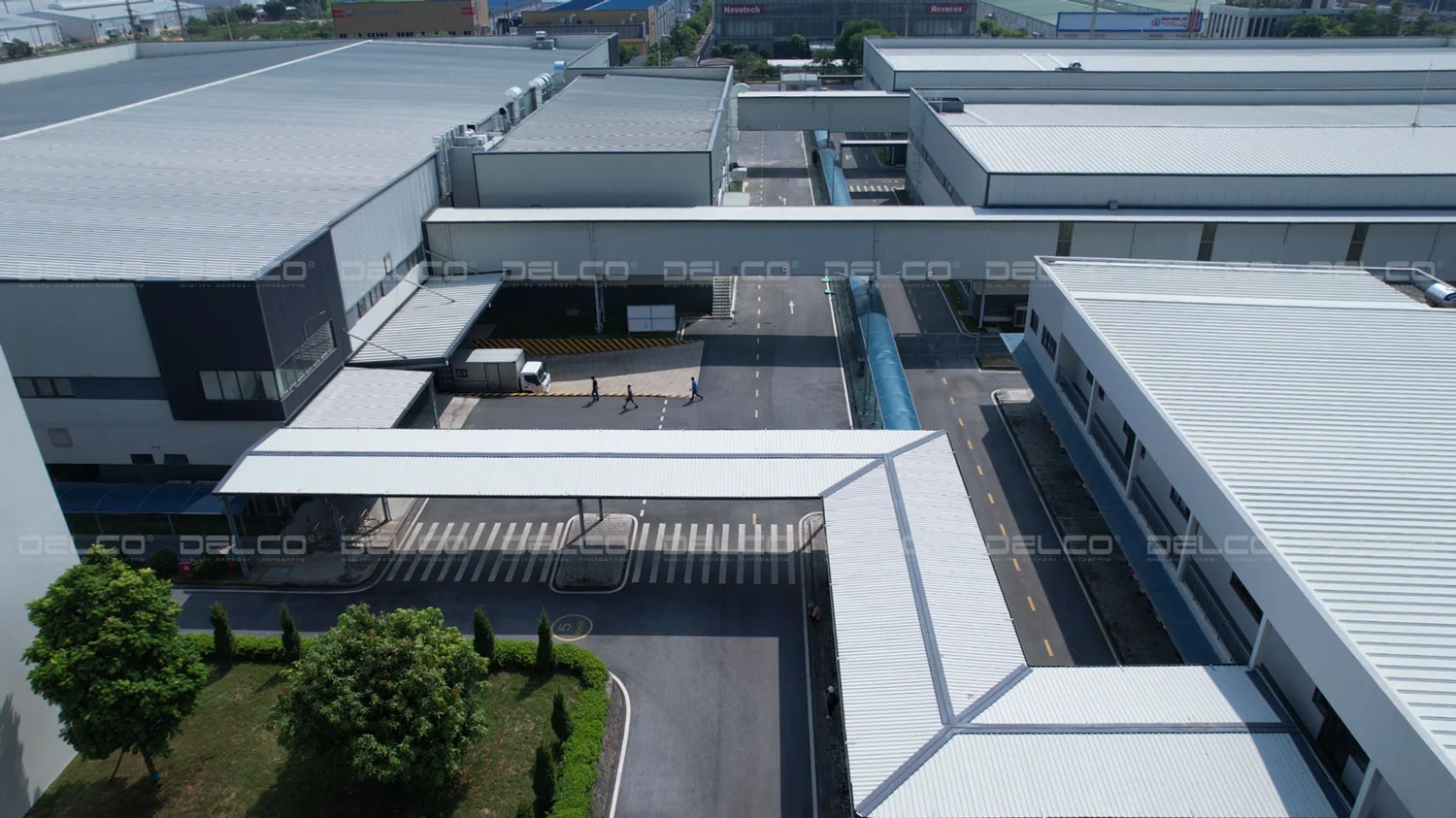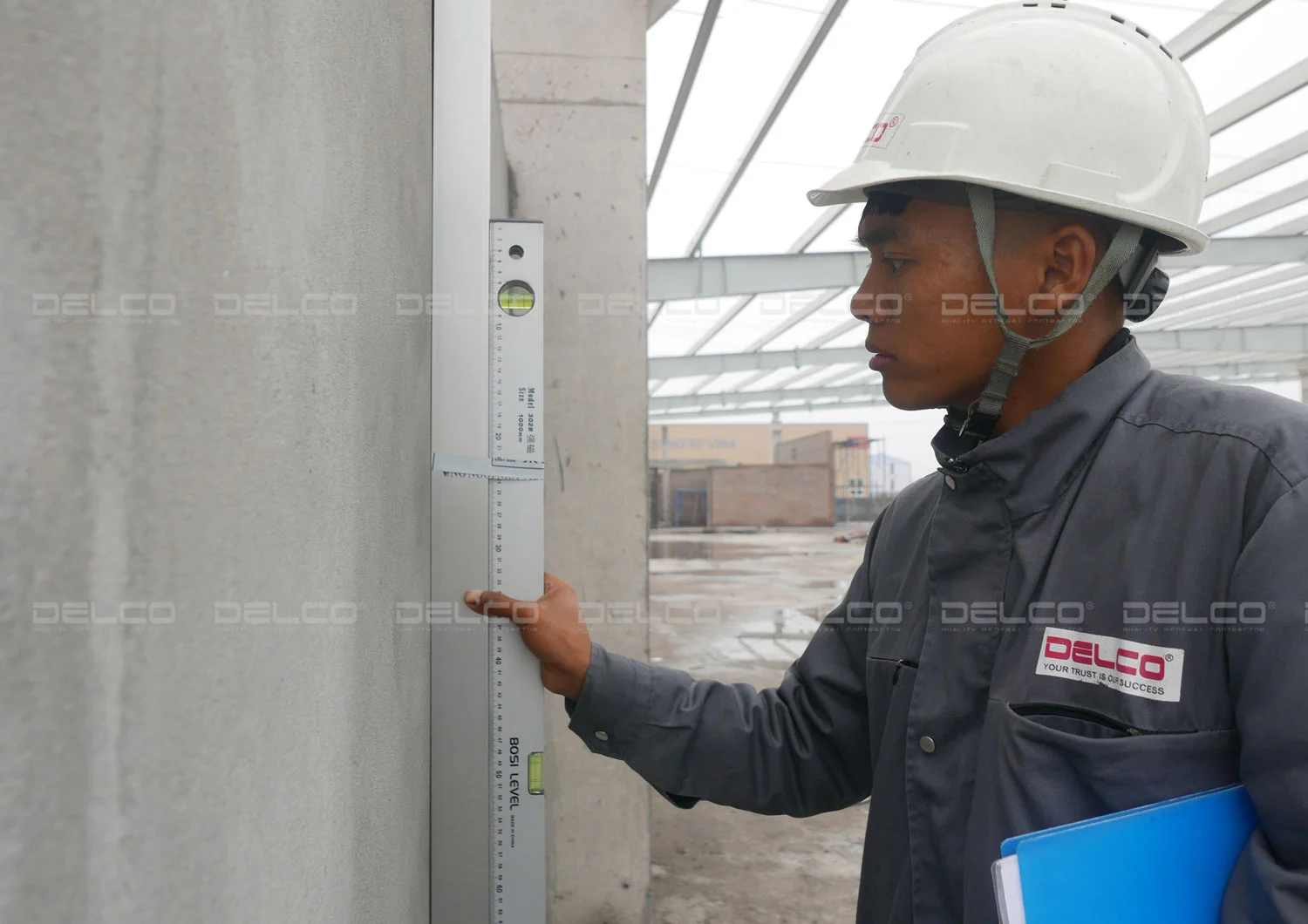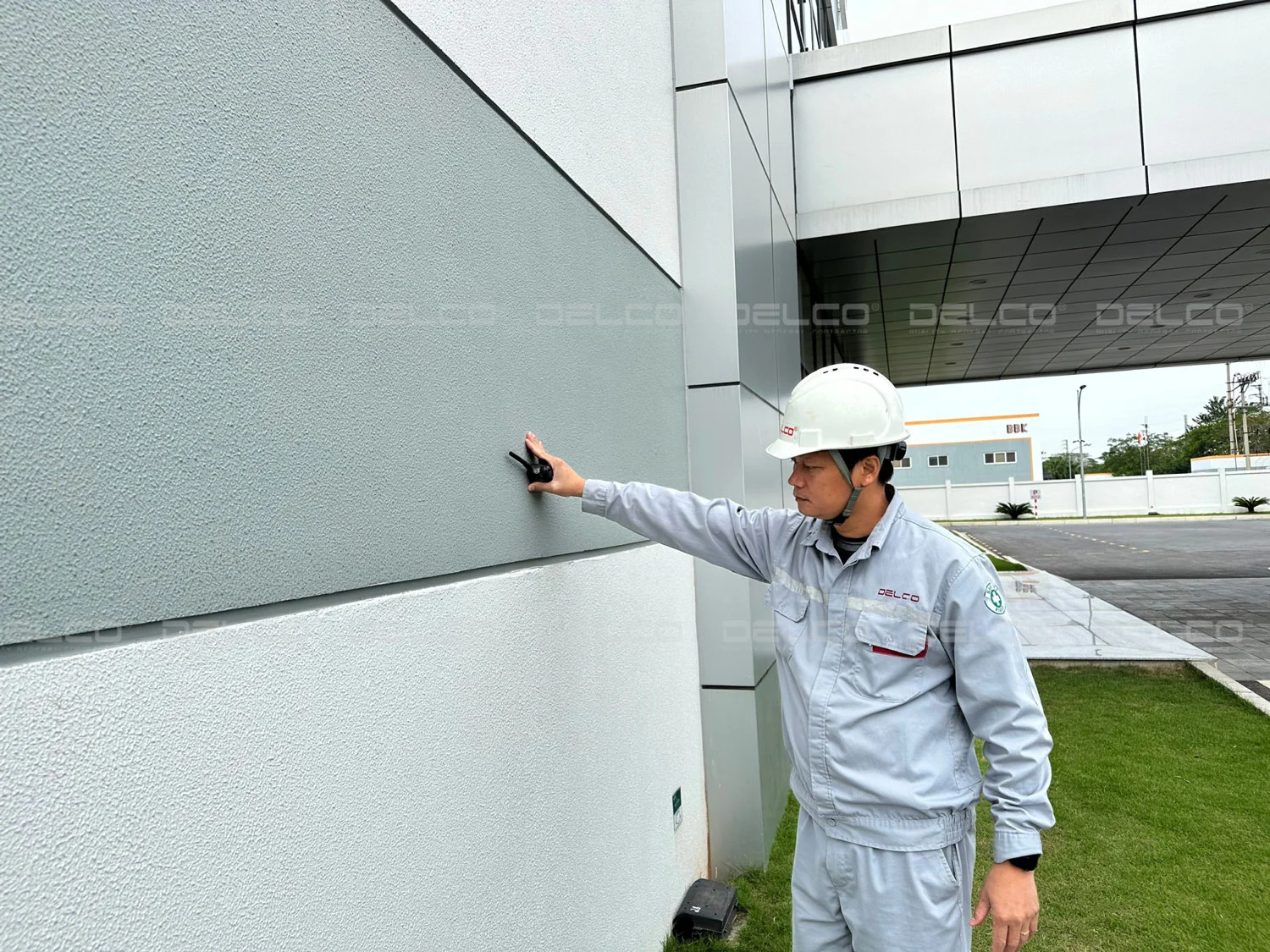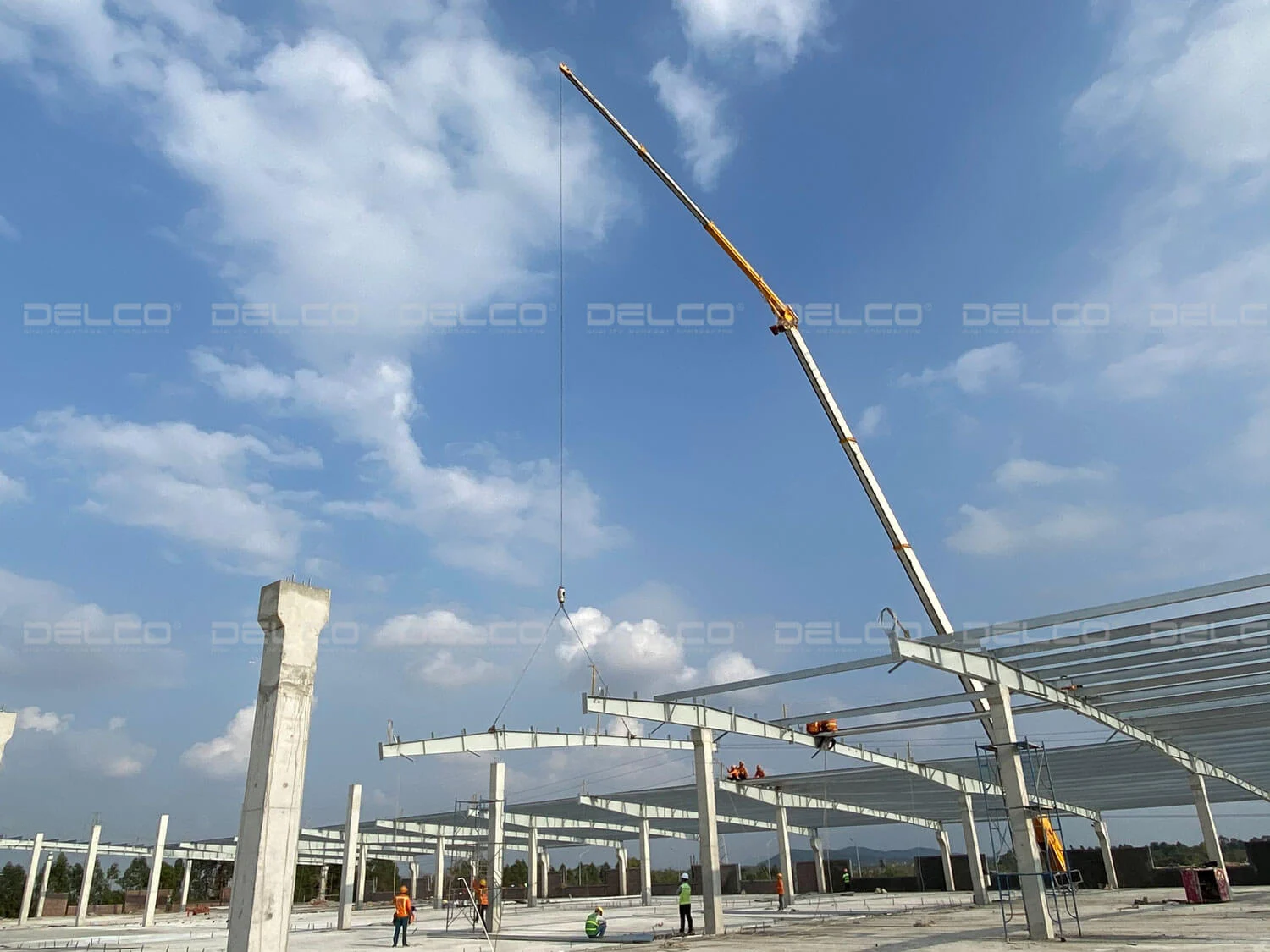Steel structure factories, also known as pre-engineered buildings (PEBs), are a popular construction solution widely chosen by investors thanks to their advantages such as shorter construction schedules, flexibility in design and production layout, and good load-bearing capacity, etc.
What is a steel structure factory?
This type of facility uses a main structural frame made of steel, including columns, beams, purlins, trusses, and bolted or welded connections. Instead of being built with cast-in-place reinforced concrete, steel structures are prefabricated in the factory, then transported to the construction site for erection. This significantly reduces construction time.
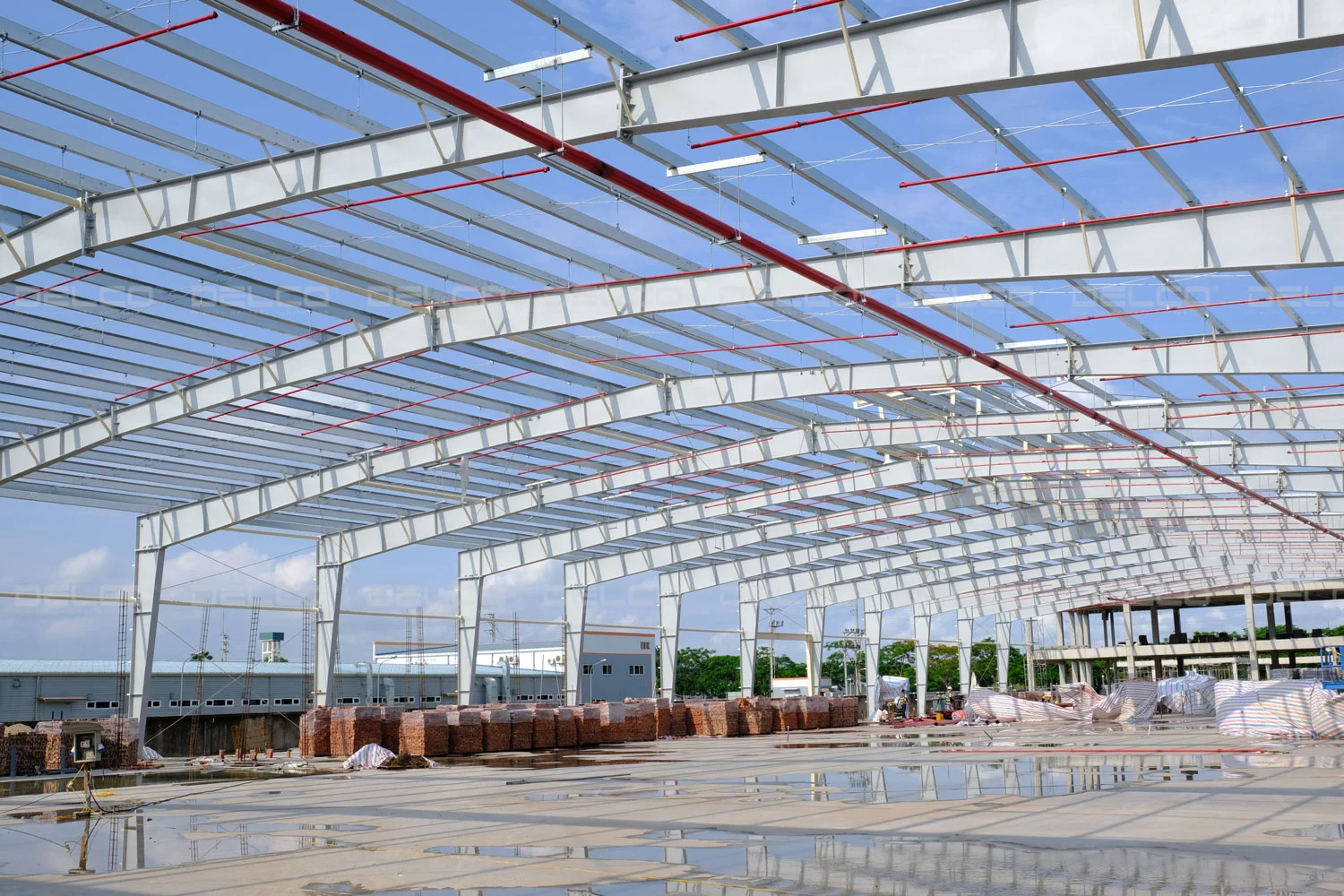
Erection of the steel structure at Dorco Living Vina Commercial Printing Factory, by general contractor DELCO.
Key advantages of steel structures
Saving construction time
The greatest advantage of steel structure factories is that steel components are prefabricated and processed at the factory, then transported to the construction site for erection. This helps shorten the construction schedule by up to 30%. Therefore, steel structures are highly suitable for projects that need to start production urgently and go into operation quickly.
Large spans and open spaces
Steel structures can achieve spans of up to 90 meters without requiring many interior columns, creating open and spacious interiors. This allows for continuous production line layouts and makes it more convenient for operating forklifts, conveyors, and large equipment inside the factory.
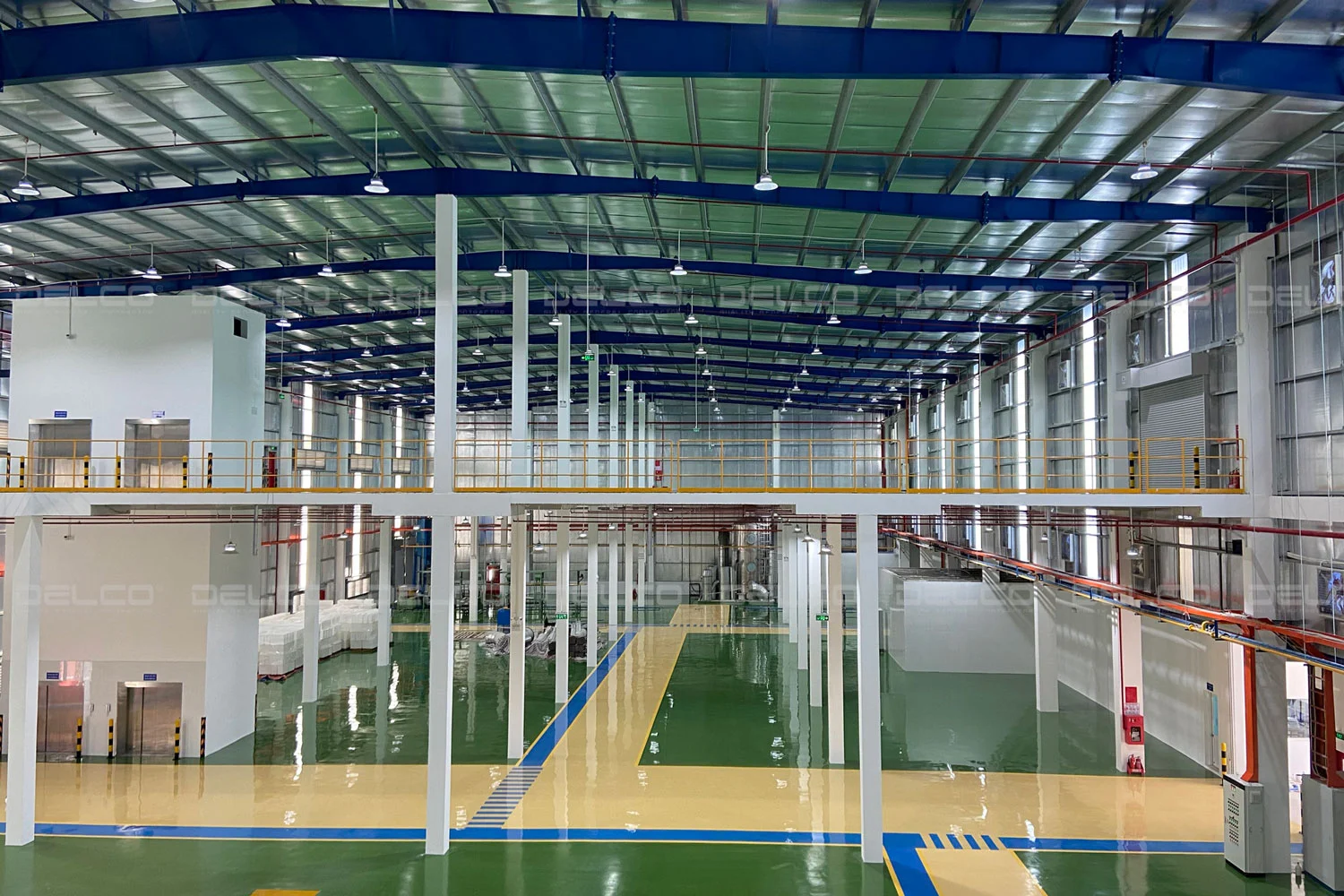
Spacious space inside GS Binh Duong Battery factory – the factory uses a 2-storey steel frame workshop structure, by DELCO as the Design-Build Contractor.
Saving foundation cost
Steel is lighter than conventional reinforced concrete, meaning the load transferred to the foundation is smaller. As a result, foundation design for steel structure factories is simpler, saving both foundation construction costs and ground treatment time.
Flexible design to meet load requirements
Steel structures often use built-up steel sections, allowing columns, beams, and trusses to be fabricated with variable cross-sections, with changes in height and thickness according to load requirements. This provides flexibility in design and enables the factory to meet different load demands and production scales of each factory and each manufacturing industry.
Easy expansion
Steel structure factories can be dismantled, extended, or renovated quickly without affecting the existing structure. This is a major advantage for investors planning to expand production in stages.
Disadvantages and mitigation measures
Fire resistance
The most significant disadvantage of steel structures is their limited fire resistance. When exposed to temperatures above 550°C, steel gradually loses its load-bearing capacity and becomes prone to deformation, which can lead to structural collapse. To address this, contractors often apply fireproof coatings or spray-applied fire protection, which can extend fire resistance for 2–3 hours.
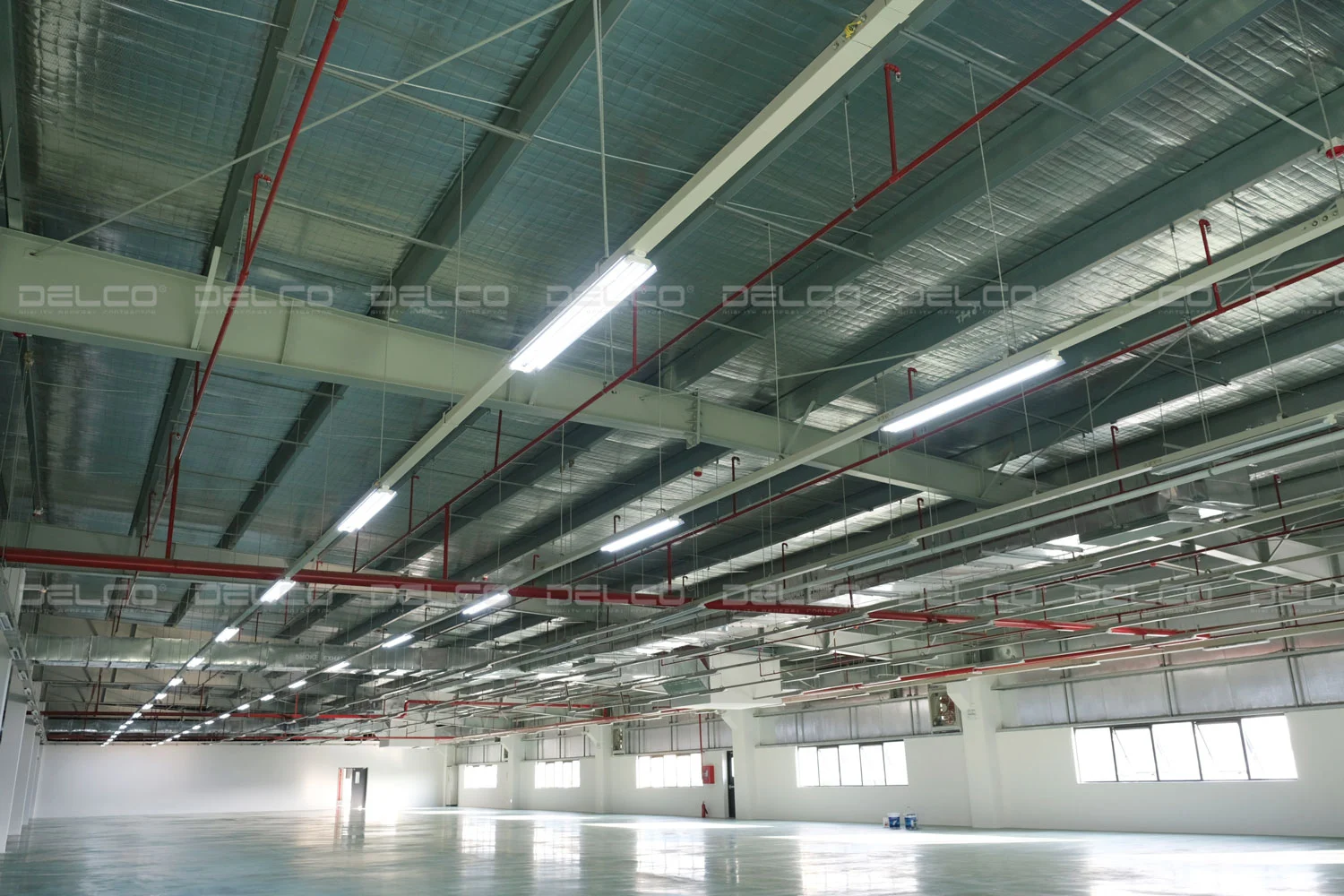
The factory is completed with a fireproof-coated steel frame system at Power Plus Technology Factory, by DELCO as Design-Build Contractor
Corrosion resistance
Steel is vulnerable to corrosion in humid environments or those containing chemicals or salt, which reduces the building’s lifespan. The solution is to apply multiple layers of anti-corrosion paint and implement a regular maintenance plan. Although this increases operating costs, regular inspection and painting of steel structures can help extend the life of the structure by 40-50 years.
Floor stability
Steel frame workshop floors are less stable than solid reinforced concrete floors, making them more susceptible to vibrations and oscillations. For this reason, steel structure factories are not suitable for industries that require absolute vibration control, such as precision engineering or microelectronics.
Complex construction techniques
Steel structure floors often use composite metal deck slabs to create a horizontal stable floor membrane, or precast concrete slabs to speed up progress. Both methods require highly skilled workers to ensure accurate welding and bolted connections. Additionally, when steel structures are combined with traditional materials such as brick walls or concrete, if not well controlled, they can easily cause leaks or cracks at the connection points.
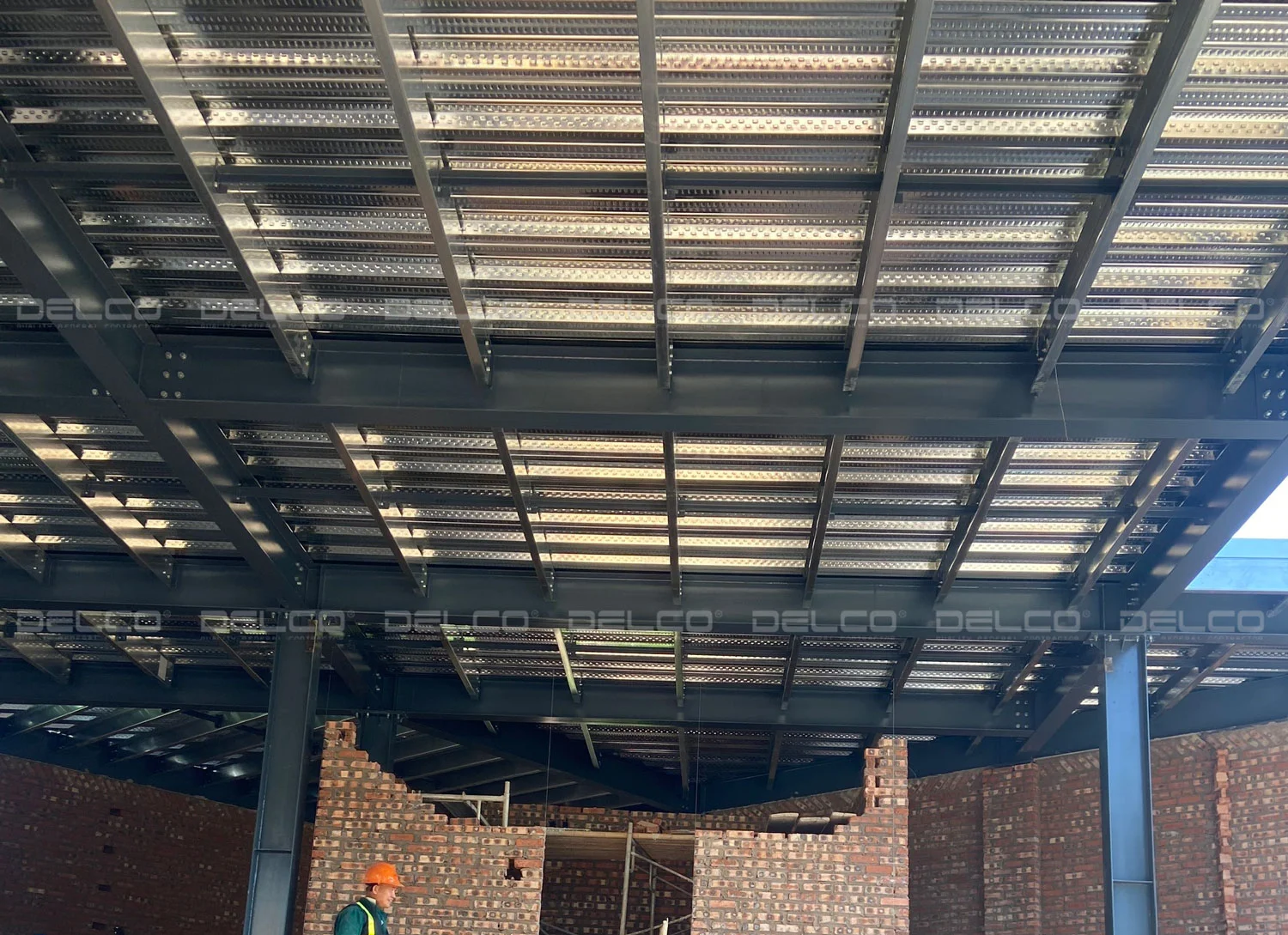
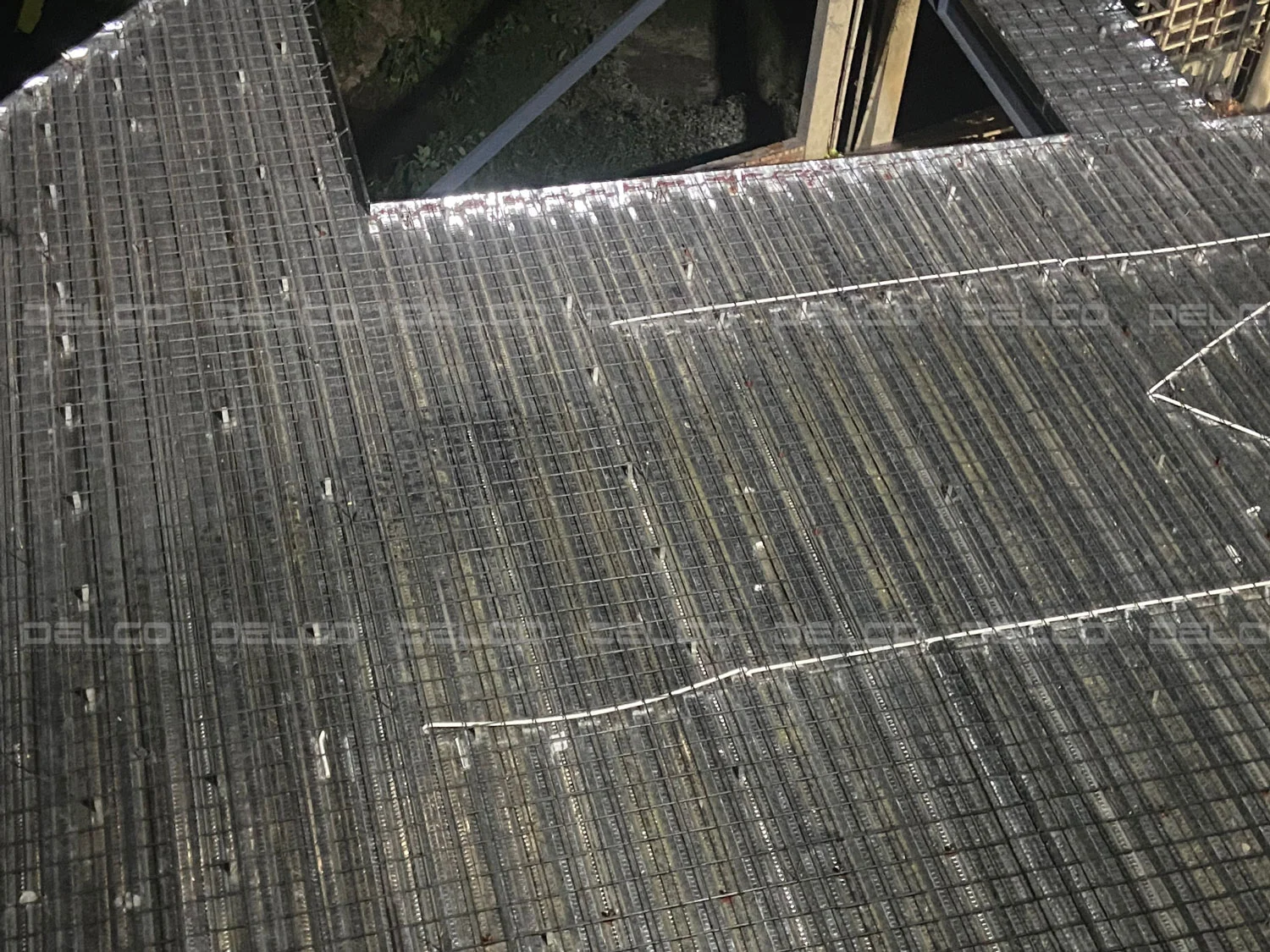
DELCO constructed composite deck slabs at Nguyen Quoc Group Office Building project.
To ensure quality and minimize risks, investors should choose reputable contractors with construction processes that comply with inspection standards for steel structures. In addition, hiring qualified supervision consultants also helps verify critical works such as weld ultrasonic testing and bolt torque inspection, ensuring the project meets technical and safety requirements.
See more: Factory construction process and safety considerations
See more: Comprehensive Quotation of Factory Design and Build in Vietnam updated 2025


